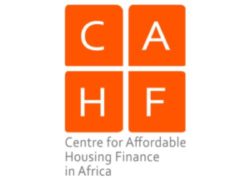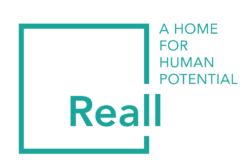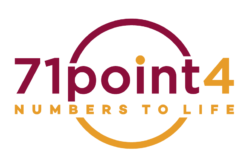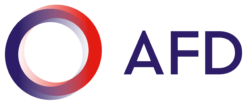Morocco - Market Shaping Indicators
Country Overview
With a population of 36 million, the Kingdom of Morocco confronts a poverty rate of 15.5 percent and an estimated housing deficit of 400 000. The lack of access to affordable housing is caused by a shortage in the supply of social housing by government and the exorbitant cost of housing produced by property developers, resulting in a housing gap between what is being provided and what households can afford.
Compared to many countries on the continent, the Moroccan housing finance market is advanced and includes several sources of loans such as private or public commercial banks, microfinance institutions and credit companies. All of the banks offer credit facilities to households wishing to obtain a home, with an average interest rate for housing loans of 4.45 percent. Despite such an active housing finance market, affordability is the most crucial factor in obtaining housing in Morocco in view of the tremendous inequality that exists in the country.
More than 50 percent of households in urban areas and almost 85 percent of households in rural areas own their home, while less than six percent in rural areas and 30 percent in urban areas are tenants. To promote access to the maximum number of households, the government has initiated several social and middle class housing programmes and launched other major projects, such as an Eco-city in Casablanca.
The Moroccan real estate sector is full of opportunities. The population is young, with 47 percent of the population between 15 and 44 years of age. The state must continue its efforts to develop an enabling environment for low-cost housing. This can be achieved, for example, through land reform and reducing the tax burden. Government has begun to respond to certain demands through the Directorate General of Taxes, which has suspended the reference framework for property prices throughout the country. This has been requested for many years by stakeholders and will enable the market to set prices solely on the basis of supply and demand.
The government launched a study in October 2019 to produce a joint proposal for a new housing programme adapted to the Moroccan context. This programme also aims to define new types of support to enable the continuation of housing programmes agreed with the state after their expiry in 2020. The purpose of this study is to draw up an inventory of public aid, assess its scope, propose measures to improve its effectiveness, particularly with the end of the tax incentive scheme by 2020, and finally to enable the implementation of the new measures to be proposed for 2021.
State of Housing Data
Obtaining data on housing finance in Morocco is relatively easy, and most of the available data is up-to-date. The central bank (Al-Maghrib) collects data on both the banking sector and the economy in general. The bank’s data is annual, available online and publicly available (www.bkam.ma).
The Office of the High Commissioner for Planning is the body responsible for the production, analysis and publication of official statistics in Morocco. It collects data at regular intervals and this varies according to the type of data. These are publicly available on its website.
The Ministry of National Land Use Planning, Urban Planning, Housing and Urban Policy is responsible for implementing policy defined by the government for housing and the city. Data collection is not as frequent as that of the central bank, but it is accessible free of charge (www.mhpv.gov.ma).
Text on this page is based on the Morocco Country Profile, drawn from Centre for Affordable Housing Finance (2020). Housing Finance in Africa Yearbook: 11th Edition 2020, with additional content from CAHF and Reall.
Key Indicators
1. Land & Infrastructure
% of urban bottom 40 households without access to basic sanitation services
| Country | Year | Data Source | Value |
|---|---|---|---|
| Cote d'Ivoire | 2012 | DHS | 96.5% |
| Ghana | 2014 | DHS | 93.15% |
| Kenya | 2014 | DHS | 88.25% |
| Morocco | 2004 | DHS | 52.05% |
| Mozambique | 2011 | DHS | 95.6% |
| Nigeria | 2018 | DHS | 83.1% |
| Tanzania | 2017 | DHS | 37% |
| Uganda | 2016 | DHS | 94.5% |
| Rwanda | 2016 | National Institute of Statistics Rwanda (NISR) | 13.13% |
| Pakistan | 2018 | The DHS Program | 2.75% |
| India | 2018 | NSSO 76th Round | 0.2% |
2. Construction & Investment
% of urban population living in slums, informal settlements, or inadequate dwellings
| Country | Year | Data Source | Value |
|---|---|---|---|
| Cote d'Ivoire | N/A | ||
| Ghana | N/A | ||
| Kenya | N/A | ||
| Morocco | N/A | ||
| Mozambique | N/A | ||
| Nigeria | N/A | ||
| Tanzania | N/A | ||
| Uganda | N/A | ||
| Rwanda | 2018 | World Bank | 42.1% |
| Pakistan | N/A | ||
| India | 2018 | NSSO 76th Round | 35% |
3. Sales & Rental
Price of the cheapest, newly built dwelling by a formal developer or contractor
| Country | Year | Data Source | Value |
|---|---|---|---|
| Cote d'Ivoire | 2018 | Site d'annonce et promotion dans l'immobilier en Côte d'Ivoire | 15,500,000 CFA$27,087.48 |
| Ghana | 2019 | Damax Construction Co. Ltd | 108,704 GH₵$19,621.66 |
| Kenya | 2019 | Tsavo Real Estate | 4,000,000 Ksh$37,037.04 |
| Morocco | 2019 | Various real estate websites | 250,000 DH$27,027.03 |
| Mozambique | 2016 | Casa Minha | 3,418,491 MZ$48,147.76 |
| Nigeria | 2019 | Millard Fuller Foundation; Shelter Origins | 2,900,000 NGN$7,651.72 |
| Tanzania | 2018 | CAHF | 37,966,107 TZS$16,508.58 |
| Uganda | 2019 | Various property developers | 125,000,000 UGX$34,097.11 |
| Rwanda | 2020 | Marchal Real Estate Developers | 10,000,000 R₣$11,119.14 |
| Pakistan | 2021 | Partners | 2,500,000 PKR$14,305.33 |
| India | 2022 | Real estate websites and industry experts | 160,000 IN₹$2,176.87 |
3. Sales & Rental
% of national households that rent their dwelling
| Country | Year | Data Source | Value |
|---|---|---|---|
| Ghana | 2017 | Ghana Statistical Service | 28% |
| Kenya | 2019 | Central Bank of Kenya, Kenya National Bureau of Statistics, FSD Kenya | 35.01% |
| Morocco | 2014 | High Commission for Planning; World Bank | 18.5% |
| Nigeria | 2018 | World Bank; Nigeria National Bureau of Statistics | 21.8% |
| Tanzania | 2017 | National Bureau of Statistics | 80.56% |
| Uganda | 2016 | DHS | 53.45% |
| Rwanda | 2020 | Access to Finance Rwanda (AFR) and National Institute of Statistics Rwanda (NISR) | 8.94% |
| Pakistan | 2017 | Population and Housing Census | 11.53% |
| India | 2018 | NSSO 76th Round | 13% |
5. Enabling Environment
Ease of Doing Business Index Rank: Global
| Country | Year | Data Source | Value |
|---|---|---|---|
| Cote d'Ivoire | 2020 | World Bank | 110 |
| Ghana | 2020 | World Bank | 118 |
| Kenya | 2019 | World Bank Ease of Doing Business | 61 |
| Morocco | 2020 | World Bank | 53 |
| Mozambique | 2019 | World Bank | 74 |
| Nigeria | 2020 | World Bank | 131 |
| Tanzania | 2020 | World Bank | 141 |
| Uganda | 2020 | World Bank | 116 |
| Rwanda | 2020 | World Bank Ease of Doing Business Indicators | 38 out of 190 |
| Pakistan | 2020 | World Bank Doing Business Indicator | 108 out of 190 |
| India | 2020 | World Bank | 63 out of 190 |
6. Economic Environment
GDP Per Capita
| Country | Year | Data Source | Value |
|---|---|---|---|
| Cote d'Ivoire | 2018 | World Bank | 1,024,171 CFA$1,789.82 |
| Ghana | 2019 | World Bank | 11,489 GH₵$2,073.83 |
| Kenya | 2018 | World Bank | 173,272 Ksh$1,604.37 |
| Morocco | 2018 | World Bank | 30,725 DH$3,321.62 |
| Mozambique | 2018 | World Bank | 30,772 MZ$433.41 |
| Nigeria | 2018 | World Bank | 659,159 NGN$1,739.21 |
| Tanzania | 2018 | National Bureau of Statistics; World Bank | 2,297,020 TZS$998.80 |
| Uganda | 2018 | World Bank | 2,357,327 UGX$643.02 |
| Rwanda | 2019 | World Bank | 737,578.59 R₣$820.12 |
| Pakistan | 2020 | World Bank National Accounts Data | 188,900 PKR$1,080.91 |
| India | 2020 | Ministry of Statistics and Program Implementation | 151,760 IN₹$2,064.76 |
7. Demand
Population Size
| Country | Year | Data Source | Value |
|---|---|---|---|
| Cote d'Ivoire | 2017 | World Bank | 24,437,469 |
| Ghana | 2019 | World Bank | 30,417,856 |
| Kenya | 2017 | World Bank | 50,221,473 |
| Morocco | 2017 | World Bank | 36,471,769 |
| Mozambique | 2018 | World Bank | 29,495,962 |
| Nigeria | 2017 | World Bank | 190,873,311 |
| Tanzania | 2019 | World Bank | 58,005,463 |
| Uganda | 2017 | World Bank | 41,487,000 |
| Rwanda | 2019 | World Bank | 12,626,950 |
| Pakistan | 2020 | World Bank National Accounts Data | 220,892,331 |
| India | 2021 | Minsitry of Health and Family Welfare | 1,361,343,000 |
All Indicators
Please enter 3 or more characters to begin search.
You can then click on a result to be taken to the relevant tab.
The Market Shaping Indicators project is a work in progress. Significant gaps exist in data, which will be filled in future revisions. We would recommend checking back regularly for updates. We are keen to receive any feedback that you have on this Dashboard, which can be sent to [email protected].
Using the Dashboard
The indicators are split into 6 key areas, split into the Housing Value Chain: Land & Infrastructure, Construction & Investment, Sales & Rental, Maintenance & Management, Enabling Environment, Economic Environment and Demand, shown in the following tabs. Navigation can either be undertaken by using the tabs, or through the Search box immediately above. Above this, currency indicators can be toggled between USD and local currency.
Users are able to further interrogate each indicator each indicator through clicking on the arrows to the left of each indicator. This expanded section shows the data elements that are used to produce the overall indicator value, dates of data collection, source details, hyperlinks to the original data where possible, and a breakdown of data quality. The majority of indicators are quality assessed, based on the whether they are: Interpretable; Relevant; Sufficiently Accurate; Representative; Timely; and Accessible. Indicators are scored on each of these criteria using a 1-4 star system, detailed below:
☆ – poor
☆☆ – moderate
☆☆☆ – good
☆☆☆☆ – excellent
Finally, all data can be downloaded for further interrogation. By clicking on Switch to Data View at the top of the screen, users can filter data based on countries and columns, and download in a .csv or .xls file.
Bottom 40
Reall targets the Bottom 40% of the urban income pyramid, referred to as the ‘Bottom 40’ or ‘B40’. An objective of the MSI work was to better understand and demonstrate the market from the perspective of households in the Bottom 40, and as such data is aggregated for this group where possible. Data for this group can be particularly challenging to come across. In part, this is due to the difficulties in accurately defining this group using existing data sets. Additionally though, the informality of much of life for lower income groups severely limits data availability, particularly in terms of key data on jobs, housing and relationships with local government. This lack of data is a key blockage for further engagement at the lower end of the housing market, and resolving this is an objective of Reall’s and of the MSI work.
Aggregations
Data is shown at various different “aggregations”, which demonstrate the size and location of the population for which the data represents. This varies from national to city level in terms of population groupings. Additional aggregations exist for the Bottom 40, as detailed above, enabling a focused view on the lower end of the market.
For relevant data, Reall’s partners are also included as an aggregation. This is not meant to be representative of the entire market, but recognises that as practitioners and experts within the lower end of the housing market of each country, their experiences are a useful check on other data sets, and an indication of the value when other data is not available.
Terms of Use
Reall Ltd (“Reallâ€) endeavours to make its data as freely available as possible in order to demonstrate the successes of its model and encourage other actors into the affordable homes movement. Reall provides the user with access to these data free of charge subject to the terms of this agreement.
Users are encouraged to use the data to benefit themselves and others in creative ways.
Unless specifically labelled otherwise, you are free to copy, distribute, adapt, display or include the data in other products for commercial or non-commercial purposes for no cost under a Creative Commons Attribution 4.0 International License, with the additional terms below.  The basic terms may be accessed here. By using or downloading the data, users are agreeing to comply with the terms of a CC BY 4.0 licence, and also agreeing to the following mandatory and binding additions:
– You agree to provide attribution to Reall in any published use of the data, including but not limited to articles, papers, blogs, books. Usage includes both direct publication of the existing data, along with any analysis undertaken by the user. This attribution should include Reall’s name and the following link – reall.net/dashboard. An electronic copy of all reports and publications based on the data should be shared with Reall ([email protected]).
– When sharing or facilitating access to the data, you agree to include the same acknowledgement requirement in any sub-licences of the data that you grant, and a requirement that any sub-licences do the same. You may meet this requirement by providing the uniform resource locator (URL) to these terms of use.
– Some datasets and indicators may be provided by third parties, and may not be redistributed or reused without the consent of the original data provider, or may be subject to additional terms and conditions. Where applicable, third party data is labelled as such, and usage conditions can be found on their respective websites.
Morocco has set up the National Agency for Land Conservation, Land Registration and Cartography. Its role is, among other things, to register land ownership and draw up cadastral maps within the framework of registration. Requesting a certificate of ownership or ensuring the authenticity of the documents delivered are some of the services provided by this online agency. Several forms, such as the request for a duplicate land title, can also be done online.
According to the Doing Business 2020 report, managing a building permit in Morocco takes about 58 days, and costs 3.3 percent of the value of the property to be built after completing a total of 12 procedures ¹.
In 2018, the agency carried out 847 500 registrations, including 361 400 real estate transactions, 167 500 mortgages and 318 600 other registrations. On average, it issues 350 000 land titles, 1 480 000 certificates and takes on three million clients annually. In 2019, it processed 1 690 039 real estate transactions ².
Of the 23 indicators in this group, 6 are currently populated.
More than 50 percent of households in urban areas and almost 85 percent of households in rural areas own their home, while less than six percent in rural areas and 30 percent in urban areas are tenants ¹. The Moroccan-style of housing that was used in the past tends to be declining in favour of modern buildings and construction.
In 2019, 44 286 building permits were granted throughout the country for a total of 115 945 dwellings ². However, these figures remain insufficient in view of the high demand.
To promote access to the maximum number of households, the government has initiated several social and middle class housing programmes. These include housing for MAD140 000 (US$14 419) and MAD250 000 (US$25 748). The construction of this housing is carried out in partnership with the private sector through the signing of agreements. Between 2008 and June 2020, a total of 75 agreements had been signed for 38 099 housing units at MAD140 000 (US$15 147) and 1 324 agreements for the production of 1 895 330 housing units at MAD250 000 (US$27 048). These latter figures cover the period from 2010 to June 2020.
The government has also launched other major projects, such as an Eco-city in Casablanca, which will have 58 000 housing units and accommodate 300 000 inhabitants. This programme is in its marketing phase.
Of the 19 indicators in this group, 4 are currently populated.
There are wage inequalities in Morocco between the public and private sectors and between rural and urban areas. The average wage is around MAD5 188 (US$534) in the private sector and MAD7 549 (US$778) in the public sector for urban areas, while in rural areas the average wage for farmers is MAD3 028 (US$ 311) ¹. These wages increased on average between 2018 and 2019 by 1.5 percent for the private sector and 4.3 percent for the public sector ².
In Casablanca, implementation of the new common reference framework for property prices has made it possible to bring prices more in line with reality. For example, the new benchmark applies a 20 percent discount on new flats and 30 percent on old ones. With these discounts, the lowest prices for a square metre in the area are MAD12 800 (US$1 318) and MAD11 200 (US$1 154). Considering these figures, it seems impossible for households to become homeowners ³. Many households therefore opt for renting. With MAD1 800 (US$185) a household can live in a flat of about 80m².
The government has put in place several social programmes to ensure that all households have affordable housing. The first is a housing programme of MAD140 000 (US$14 419) for a living area of between 50m² and 60m². This programme targets artisans, agents working in the communes, and households with incomes below two minimum wages. Between June 2008 and June 2020, 28 053 dwellings received the certificate of conformity ⁴. The second programme of MAD250 000 (USD25 749) targets households that do not own a dwelling or households using the dwelling as their principal dwelling for a period of four years. Between June 2010 and June 2020, 488 443 dwellings received the certificate of conformity.
The Moroccan banking system comprises 90 credit institutions and similar organisations, including 12 microcredit associations (compared to 13 in 2018) and 19 payment institutions. In Morocco, the 24 banks that are fully dedicated to granting bank credit have a network of 6 539 branches with 7 613 automated teller machines (ATMs). Abroad, there are more than 48 subsidiaries and 15 branches with around 1 523 points of sale ⁵.
The structure of the banks’ total assets has not changed significantly compared to previous years. Loans and advances to customers continue to account for a large share, namely 59.4 percent compared with 59.5 percent a year earlier. Loans to credit institutions fell by 0.5 basis points to 13.1 percent. Conversely, the share of the securities portfolio increased by 0.8 basis points to 21.8 percent and the share of foreign currency banking assets increased by 0.6 basis points to 8.5 percent, of which almost four percent is held by non-residents ⁶.
Despite a 6.8 percent delinquency rate, and after a three percent decline in 2018, outstanding housing finance contracted by 3.5 percent to nearly MAD26.3 billion (US$2 708 781 229). Household bank debt increased by 5.1 percent to MAD358 600 000 000 (US$36 934 180 562), up from 5.7 percent in 2018. Of this total, Mourabaha real estate financing amounts to MAD5 700 000 000 (US$587 074 259) ⁷. This is financing whereby a client who has chosen a property contacts a participatory bank to inform it of this choice and applies for a loan. The bank buys this property and resells to the client for a pre-determined margin. The client will then pay monthly instalments over 25 years with the notary fees financed by the bank. A deposit of between five and 10 percent of the total value of the property is required. However, this advance is returned at the end of the transaction.
Compared to many countries on the continent, the Moroccan housing finance market is advanced. Between 2018 and 2019, the number of loan beneficiaries decreased from 68 495 to 67 332 clients, which is explained by a 35 percent decrease in state-sponsored loans. An 11 percent increase in free loans was also granted by banks. The average amount of credit in 2019 was MAD391 000 (US$40 271), down MAD7 000 (US$721) from 2018. The average interest rate for housing loans was 4.45 percent. The share of loans with an interest rate below six percent increased by two basis points at the expense of those with higher rates .
Partnerships between banks and government provide greater access to housing finance for middle and low income families. For the financing of social housing, the Guarantee Fund for Irregular and Modest Income covered loans granted by credit institutions to 180 449 households for an amount of MAD28 390 000 000 (US$2 924 041 791), while the Guarantee Fund for Housing Loans for Public Sector Employees covered 50 869 households for an amount of MAD14 510 000 000 (US$1 494 464473) ⁸. The average salary was MAD2 368 (US$244) in August 2019 ⁹, suggesting that the majority of Moroccans can buy social housing for MAD140 000 (US$14 425). For households not able to buy a property, renting differs according to the housing area and the type of property. For example, renting a flat in Casablanca, the country’s main city, costs at least MAD1 800 (US$185).
Of the 40 indicators in this group, 15 are currently populated.
Of the 6 indicators in this group, 4 are currently populated.
The Kingdom of Morocco is a North African country with a diversified and prosperous economy, ranking 53rd among the most attractive countries in which to do business ¹. Access to affordable housing is a priority for the Moroccan government. It intervenes directly on the market through the Société Nationale Immobiliere du Maroc (Moroccan National Real Estate Agency) but also indirectly through the signing of agreements and partnerships with private sector companies, whether banks or property developers in framing of several programmes.
For banks, it acts through the central bank. The change in its key interest rate directly affects the change in the lending rate, thus the possibility for a household to become a homeowner. For property developers, tax benefits and other reduced registration fees are intended to provide better access to housing. However, the vast majority of developers argue that these measures remain insufficient.
From a legislative point of view, the House of Representatives ratified a new law in 2017 on lease and rental in Morocco. This law makes it compulsory to establish a lease contract between owner and tenant.
In response to the COVID-19 crisis, the government introduced the PLFR amending finance bill for the housing sector. This Bill provides for several measures to boost the sector. The aim is to restore buyers’ confidence and encourage investors to maintain their programmes by giving them greater visibility. The tax measures include extending the deadline for construction programme agreements by six months, reducing registration fees for residential property acquisitions by 50 percent, and postponing certain deadlines or dematerialising authorisations issued by urban agencies ². Unfortunately, some people believe that these measures will not have a significant impact on stimulating real estate, as they tend to affect production and have little effect on costs.
The Ministry of Urban Planning and Housing has also taken measures, such as speeding up the process of launching calls for tenders via private operators, to save time and be able to resume work quickly. It also invited the urban agencies to re-examine the authorisation applications that had not received the green light from the competent commission³.
Of the 6 indicators in this group, 2 are currently populated.
Gross national income per capita increased from US$ 1 390 in 2000 to US$3 090 in 2018. Despite this increase, Morocco is considered a lower middle income country¹. The growth rate in 2019 was 2.5 percent compared to 3.1 percent in 2018 due to an unfavourable external environment and poor agricultural production, despite low inflation of 0.2 percent compared to 1.6 per cent in 2018². Since January 2018, Morocco has opted for a more flexible exchange rate regime. The central bank continues to set the price of the dirham on the basis of the euro at 60 percent and the dollar at 40 percent, with an increased margin of flexibility. In 2019, the average exchange rate was MAD9.65 to the dollar. The average annual increase in gross domestic product (GDP) over the decade per inhabitant was 2.3 percent, compared to 3.4 percent in the previous decade³.
The central bank has adopted a number of measures to support access to credit, such as reducing its key interest rate by 25 basis points to two percent and introducing a mechanism that will triple banks’ refinancing capacity with the central bank. It also called on credit institutions to suspend, until further notice, all dividend distributions for the 2019 financial year in order to cope with the effects of the crisis and preserve their capacity to provide funding in these exceptional circumstances.
Of the 14 indicators in this group, 9 are currently populated.
The population of Morocco is 36 016 257¹, with a poverty rate of 15.5 percent². The housing deficit for 2018 was estimated at around 400 000, a vast improvement compared to the 800 000 units in 2012³.
Affordable housing is the main source of concern for households and as such an important issue for the government. The lack of access to affordable housing is caused by a shortage in the supply of social housing by government and the exorbitant cost of housing produced by property developers, resulting in a housing gap between what is being provided and what households can afford.
The COVID-19 pandemic has exacerbated the problems in this sector. In response, the government has created a special COVID-19 emergency fund to help families in the informal sector by providing between MAD800 and MAD1 200 (US$82 and US$124) as well as a freeze on water and electricity bills for these households ⁴.
Of the 7 indicators in this group, 6 are currently populated.





